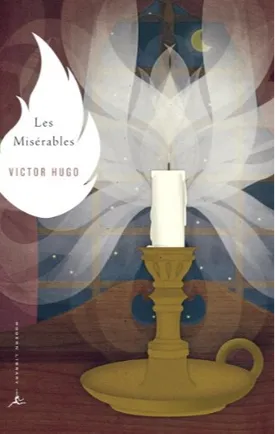Victor Hugo’s acclaimed 1862 French novel, Les Misérables, is a literary classic—following a complex and compelling narrative that could only be created by a genius. Boasting five volumes with over 2,500 pages in total, the entire scope of the novel is striking, telling a sweeping story of injustice and human resilience in the years leading up to and following the 1832 Paris uprising. With the iconic story later adapted into the globe-trotting 1985 musical after decades of critical praise, Les Misérables is now associated with a timeless epic experience for audiences. It’s a classic for a reason.
The original story follows the life of Jean Valjean—who’s released from prison on parole following a 19-year sentence for the theft of a loaf of bread. Hunted by an obsessive Police Inspector Javert, Valjean struggles to start over with a laundry business and live an upstanding life. His good will eventually earns him an adoptive daughter, Cosette, whom he escapes with to Paris in an effort to remain hidden and free. Together, their story involves treacherous journeys, a series of fateful encounters, and inevitable return to Paris.
Once in Paris, the reader dives deeper into the expansive social landscape of the city; Hugo describes the lives of desperate people—from those living in the sewers and makeshift huts, to the beggars, thieves, street urchins and revolutionaries. While he models a cast of characters who’re ordinary yet running in the currents of extraordinary events, Hugo also suggests a complex network of contradictions that blur the lines between morality and justice—a leitmotif for the entire novel.
For every criminal, a victim; for every exploiter, an exploited; for every oppressor, an oppressed. The characters and the events of Les Misérables are not only rooted in a sense of historical accuracy, but are fundamental to Hugo's own challenge to readers: to consider authentic empathy and a moral responsibility for our fellow human beings.
Valjean himself is the main bearer of that responsibility and his journey follows multiple paths with plenty of conflict and sacrifice. When faced with a moral dilemma and confronted by Javert following his illegal business, Valjean makes the difficult decision to accept responsibility and take his punishment—later sparing Javert in a moment of courage when mercy was the opposite of justice. In the end, Valjean chooses goodness and allows some of history’s darkest parts to disrupt hopes and pave the way for a more moralistic future.
These themes of morality and justice, in the end, are not only found in the characters and their actions, but also in the circumstances that brought them together, such as the hopelessness of a humble worker, the burden of poverty and an outdated penal system—all of which come together to create a classic novel steeped in tragedy and resilience. Over the pages, Hugo sets up an ethical framework that calls us, as readers, to reject ideological choices and appeal to reason, understanding, and compassion.
While tragedy fills much of the story, Les Misérables also offers hope. Hugo closes the novel on Jean Valjean, a man who was suffocated by the heavy yoke of his own past only to break free, allowing himself to grow and discover a sense of morality and inner peace. After years of running, anguish, and adventure, the grand finale sees Valjean finally come to terms with his own existence—in the story and in life, a powerful and memorable moment of redemption.
With Les Misérables, Hugo provides an unforgettable journey that covers many aspects of human experience—from compassion, sorrow, empathy, and hope—all of which cannot be extracted from his timeless work of art. It’s a passionate love letter to humanity, a reminder for readers to remain courageous and fight for what is right, despite the hardships and tribulations of life. A true classic to read and remember.

